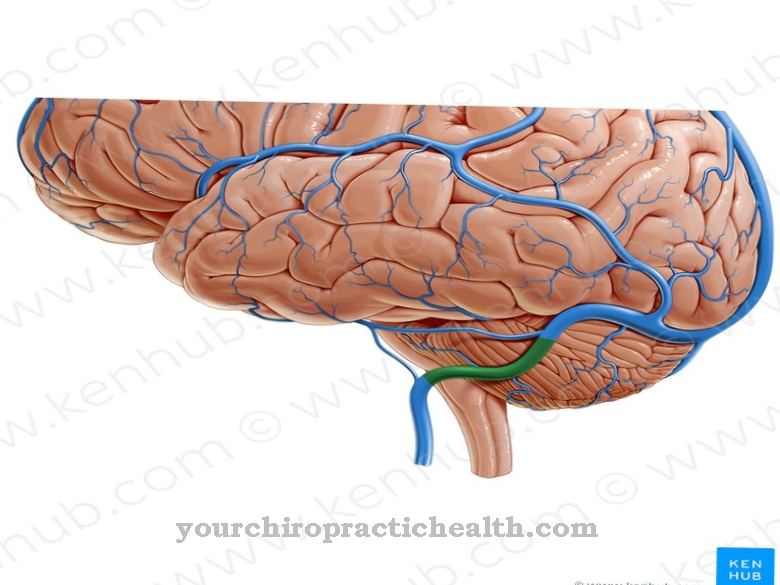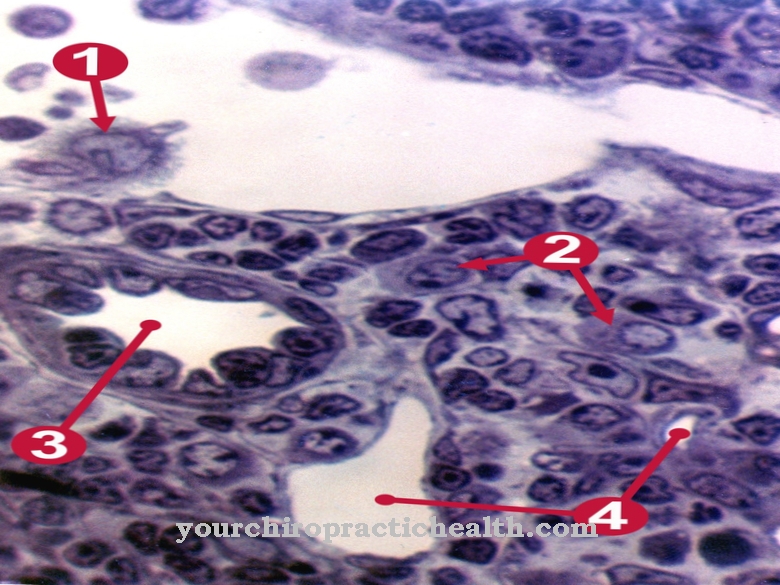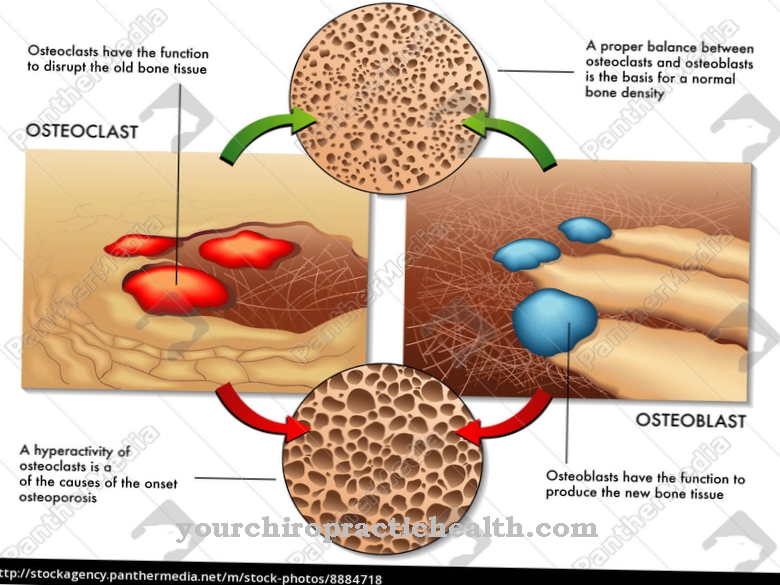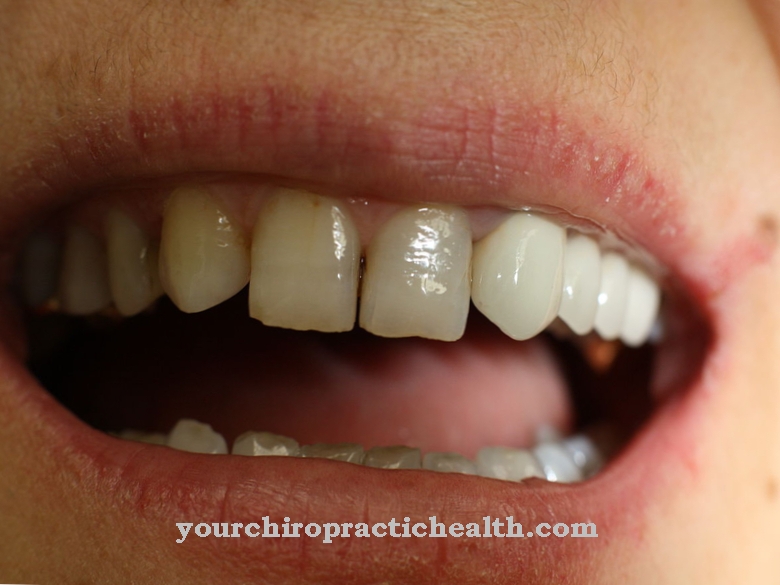The Tooth root is a part of the tooth and is used to fix it in the tooth holding apparatus. The front teeth usually have one root, while the more distal teeth have up to three roots. Inflammations in the root of the tooth or at the tip of the root are often very painful and, without treatment, can lead to the destruction of the tooth.
What is the tooth root?
The tooth root is the part of the tooth that lies below the tooth crown and the tooth neck and anchors it in the tooth socket. The root of the tooth is covered with a layer of dental cement. The dental cement consists of minerals, collagen fibers and water and serves to protect the root. It is formed by cementoblasts, which are a special form of connective tissue cells.
As a rule, the tooth root tapers towards the tip of the root and is therefore conical. Furthermore, the tooth root is twice as long as the tooth crown. Incisors and canines usually have one root, the premolars (small molars) two roots and the molars two to three roots. The first teeth (milk teeth) already have tooth roots when they are fully grown.
Anatomy & structure
The tooth roots consist for the most part of the dentin (tooth bone). On the surface, the dentin is covered with dental cement. The dentin has a bone-like structure and consists of 70 percent calcium hydroxylapatite, 20 percent organic material (mainly collagen) and 10 percent water. It surrounds the pulp. The dental cement on the surface of the dentin also consists of 65 percent minerals such as hydroxyapatite, 23 percent collagen fibers and 12 percent water.
The basic substance of dental cement is thus similar to that of the dentin. However, its structure is slightly different. It comes in four modifications. However, like dentin, it is also formed from cementoblasts. The tip of the tooth root lies in the tooth socket and has an access opening for nerve fibers and blood vessels that supply the entire tooth. The entirety of the blood vessels and nerve fibers is also known as the tooth pulp (tooth pulp), the narrow extensions of which into the tooth root are also known as root canals. The human teeth have different numbers of roots. The further distal (backwards) the teeth are, the more roots they have. There are exceptions, however.
The first upper premolar has two roots, while the second upper premolar has only one root. There are also numerous anomalies in the number and shape of the roots. Among other things, tooth roots that have grown together or single-rooted teeth with two root tips are found. The upper molars usually have three roots. A very strong root (the palatal root) lies towards the palate. The two smaller vestibular roots are on the cheek side. Very large deviations with up to ten stunted root canals are often found in the wisdom teeth. Their roots can also have barbs, so that tooth extractions often pose great challenges and root canal treatments are not possible at all.
Function & tasks
The function of the tooth root is to anchor the tooth in the tooth holding apparatus and to supply it via root canals. The tooth support apparatus includes the tooth socket of the jaw, the gums, the periodontal membrane and the root cement. The part of the jawbone in which the tooth socket is located is called the alveolar process (processus alveolaris). The gums are part of the oral mucosa. It covers the tooth socket and surrounds the teeth cervically as an epithelial cuff (seam epithelium).
The periodontal membrane represents the connective tissue of the tooth support apparatus. It consists of connective tissue fibers that bridge the short distance between the tooth cement and the wall of the tooth socket. As a result, the tooth is anchored in the tooth socket so that it can move somewhat. This wedge stabilized by connective tissue fibers is also called gomphosis. Thus the gomphosis belongs to the connective tissue-like bone connections. In addition to the anchor function, the tooth root also takes care of the supply of the tooth via the root tip. Both blood vessels and nerve fibers have access to the tooth via the root canals.
You can find your medication here
➔ Toothache medicationDiseases
The most well-known disease of the tooth root is the so-called pulpitis. Pulpitis is an inflammation in the root of the tooth. This is usually an infection with caries bacteria. Caries bacteria are made up of different types of streptococcus. First of all, food residues (especially carbohydrates) that have not been removed cause bacterial cultures to develop on the tooth, which produce acids. The acids dissolve the enamel on the tooth crown. Holes are created that are further colonized by bacteria (caries). If left untreated, the process continues until the bacteria penetrate the tooth root.
The gums can also be attacked by the bacteria (periodontitis), resulting in large gum pockets, which in turn become permeable to other bacteria and penetrate to the tooth root. In both cases, inflammation of the roots of the tooth (pulpitis) can occur, which is very painful. In pulpitis, the tooth pulp (tooth pulp) becomes inflamed, as the name suggests.
However, the pulp is made up of nerve fibers and blood vessels. This has the consequence that nerve fibers become inflamed. This direct involvement of the nerves causes extremely severe pain. Toothache is therefore one of the most unbearable pains of all. In this case, the dentist must perform a root canal treatment by drilling open the tooth, removing inflamed tissue and rinsing the root canal with an antibacterial solution. The root canals are then sealed with a root filling paste.

























.jpg)


